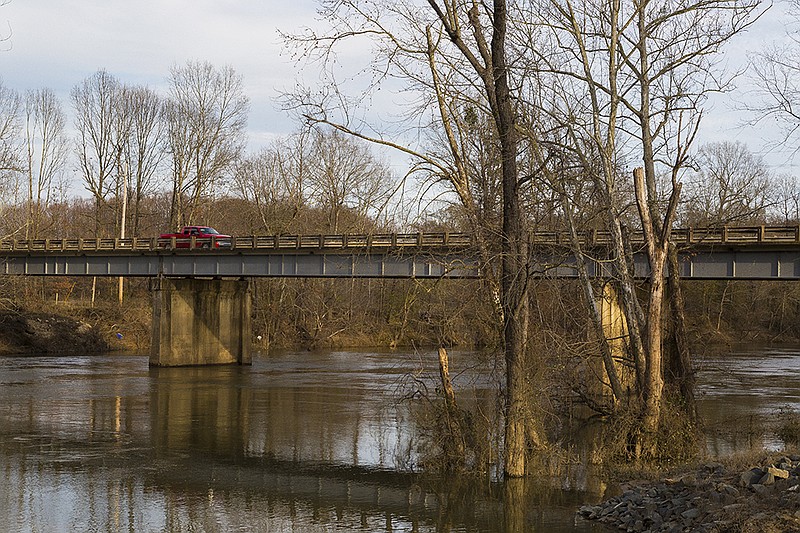A longer and wider bridge over the Little River is planned to replace the existing Arkansas Highway 41 bridge that has been deemed structurally deficient, though the bridge remains structurally sound.
"The project is estimated to cost $10 to $15 million," said Steve Frisbee, highway department District 3 engineer.
The bridge, built in 1961, has been ruled structurally sound. Because of its age, deterioration and width, however, the structure doesn't meet current standards, Frisbee said.
A bridge is classified as structurally deficient if the deck, superstructure or subtructure are rated in 'poor' condition based on the National Bridge Inventory ratings scale, or if its load-carrying capacity is significantly below design standards or the bridge frequently floods, Frisbee said.
"This bridge does not have a reduced load-carrying capacity, but the substructure is rated in 'poor' condition due to deterioration of the bridge elements," he said.
Although there is deterioration, it is not significant enough to lower the capacity where it is unable to carry legal loads.
"Legal truck weights have increased some over the years; however, the existing bridge does not have any weight restrictions. Current weight limits for 18-wheelers is 80,000 pounds, with exception for unprocessed farm products and forest products that allows up to 85,000 pounds," Frisbee said.
The new bridge will be 2 feet longer than the existing bridge, and significantly wider.
"The new bridge will have a 40-foot open road width. That will be two 12-foot lanes and two 8-foot shoulders. The existing bridge has a clear roadway width of 26 feet, 2 inches, curb to curb," Frisbee said.
The Highway 41 bridge is about 1/4-mile long and connects Sevier County on the north side to Little River County on the south side. The existing bridge was built in 1961 and has a traffic count of about 2,200 vehicles per day, according to a 2013 count.
The bid letting is scheduled for March 23. An advertisement and availability of plans and proposals will be published on the AHTD Website four weeks before the letting date.
If the bid is awarded after the March 23 letting, work is estimated to begin six weeks later, near the beginning of May.
"At this time, I still estimate the project to take two to three years to complete. A more accurate completion date can be estimated once the project is let and the contractor provides a construction sequencing schedule," Frisbee said.
Environmentally, the bridge's construction will require relocation of freshwater mussels living in the Little River.
"There are endangered species (freshwater mussels) known to exist in some parts the Little River. We are currently working with the U.S. Fish and Wildlife Service to determine appropriate conservation measures to minimize potential impacts to those species. Appropriate conservation measures have yet to be determined," Frisbee said.
According to the engineer, no surveys have been done on the mussels after winter flooding.
"While it is true that flood events can displace a mussel bed, flood events are a routine occurrence in river systems, and the species that reside in them have adapted to these types of events," Frisbee said.
"Mussel beds tend to form in locations within streams where substrates remain stable even during such flood events. The highway department, in consultation with the US Fish and Wildlife Service, has committed to translocate all mussels from within the direct project foot print. This will require the Department to conduct additional surveys for freshwater mussels prior to beginning construction activities within the river channel."
Alligators live in the Little River in the area of the bridge, but Frisbee doesn't expect problems.
"There are alligators in Little River," Frisbee said, "but we do not anticipate them causing any problems with the construction. The Arkansas Game and Fish Commission will handle the removal of any problem alligators, should that need arise.
"Prior to the flood event, alligators were known to occur within the project area. They were also known to occur both upstream and downstream of the project area prior to the recent flood event. The recent flood events likely did not change this. We have no expectation they will cause problems during construction; however, the AGFC will be notified if any problems arise."

